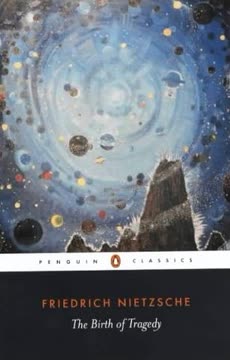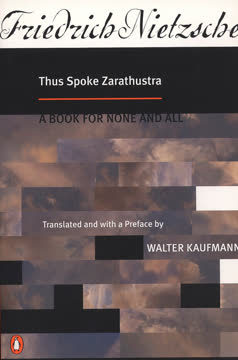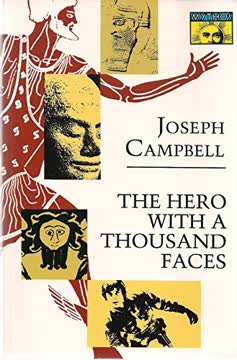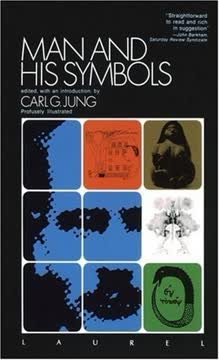Key Takeaways
1. The unconscious plays a crucial role in shaping human behavior and experiences
The unconscious is not just a receptacle for all unpleasant things, but the source of all good and evil.
The hidden mind. The unconscious contains a vast reservoir of information, memories, and instincts that influence our thoughts, feelings, and actions. It operates beyond our conscious awareness, yet profoundly shapes our experiences and decision-making processes.
Dual nature. Jung emphasized that the unconscious is not merely a repository for repressed thoughts and desires, as Freud suggested, but a dynamic and creative force. It contains both positive and negative aspects, serving as the wellspring of our potential for growth and destruction.
Components of the unconscious:
- Personal unconscious: Individual repressed memories and experiences
- Collective unconscious: Universal, inherited patterns and instincts
- Complexes: Emotionally charged clusters of ideas and memories
- Shadow: The dark, unacknowledged aspects of personality
2. Archetypes are universal patterns that structure the human psyche
Archetypes are the living system of reactions and aptitudes that determine the individual's life in invisible ways.
Inherited blueprints. Archetypes are innate, universal patterns or images that derive from the collective unconscious. They represent fundamental human experiences and relationships, shaping how we perceive and interact with the world around us.
Symbolic manifestations. While archetypes themselves are abstract, they manifest in our conscious minds through symbols, myths, and cultural motifs. These manifestations can vary across cultures, but the underlying patterns remain consistent.
Key archetypes identified by Jung:
- The Self: The central organizing principle of the psyche
- The Shadow: The dark, repressed aspects of personality
- The Anima/Animus: The contrasexual aspect of the psyche
- The Wise Old Man/Woman: The archetype of wisdom and meaning
- The Hero: The archetype of transformation and growth
3. The process of individuation leads to psychological wholeness and self-realization
Individuation means becoming an "in-dividual," and, in so far as "individuality" embraces our innermost, last, and incomparable uniqueness, it also implies becoming one's own self.
Journey to wholeness. Individuation is the lifelong process of psychological development and integration. It involves becoming aware of and integrating the various aspects of one's personality, including the unconscious elements, to achieve a sense of wholeness and authenticity.
Balancing act. The individuation process requires balancing the demands of society with one's inner needs and potentials. It involves confronting and integrating the shadow, developing a relationship with the anima/animus, and ultimately realizing the Self.
Stages of individuation:
- Persona development: Adapting to social expectations
- Shadow integration: Acknowledging and accepting one's dark side
- Anima/Animus development: Integrating the contrasexual aspect
- Self-realization: Achieving a sense of wholeness and meaning
4. Dreams provide valuable insights into the unconscious mind
Dreams are impartial, spontaneous products of the unconscious psyche, outside the control of the will. They are pure nature; they show us the unvarnished, natural truth, and are therefore fitted, as nothing else is, to give us back an attitude that accords with our basic human nature when our consciousness has strayed too far from its foundations and run into an impasse.
Windows to the psyche. Dreams offer a direct pathway to the unconscious, presenting symbolic representations of our inner conflicts, desires, and potentials. They serve as a natural compensatory function, balancing our conscious attitudes and providing guidance for psychological growth.
Interpretation and analysis. Jung emphasized the importance of understanding dreams in the context of the individual's life and psyche, rather than relying on fixed symbol interpretations. He developed methods such as amplification and active imagination to work with dream material.
Key aspects of Jungian dream analysis:
- Personal associations: Exploring the dreamer's unique connections to symbols
- Collective symbolism: Considering universal and cultural meanings
- Compensatory function: Understanding how dreams balance conscious attitudes
- Prospective aspect: Recognizing dreams' potential for guiding future development
5. The integration of opposites is essential for psychological growth
The greater the tension, the greater is the potential. Great energy springs from a correspondingly great tension of opposites.
Dynamic balance. Jung emphasized the importance of recognizing and integrating opposing forces within the psyche. This process of integration, or transcendent function, leads to greater psychological wholeness and creativity.
Embracing duality. Rather than seeking to eliminate one side of an opposition, Jung advocated for holding the tension between opposites. This approach allows for the emergence of a third, transcendent position that incorporates elements of both sides.
Examples of psychological opposites:
- Conscious vs. Unconscious
- Thinking vs. Feeling
- Introversion vs. Extraversion
- Light vs. Shadow
- Masculine vs. Feminine
6. Synchronicity reveals meaningful connections between psychic and physical events
Synchronicity is an ever present reality for those who have eyes to see.
Acausal connections. Synchronicity refers to meaningful coincidences between inner and outer events that cannot be explained by cause and effect. Jung proposed this concept as a way to understand the relationship between psyche and matter.
Expanded worldview. The recognition of synchronistic events challenges our conventional understanding of reality and suggests a deeper, interconnected order in the universe. This perspective aligns with developments in quantum physics and systems theory.
Characteristics of synchronistic events:
- Meaningful coincidence between inner and outer events
- No causal relationship between the events
- Subjective interpretation of significance
- Often associated with periods of psychological transformation
7. Self-knowledge is the key to personal development and societal progress
Your visions will become clear only when you can look into your own heart. Who looks outside, dreams; who looks inside, awakes.
Inner exploration. Jung emphasized the importance of self-reflection and introspection as the foundation for psychological growth. By understanding our own motivations, fears, and potentials, we can make more conscious choices and live more authentic lives.
Societal implications. Jung believed that individual self-knowledge was crucial for the health of society as a whole. As individuals become more conscious of their inner workings, they are less likely to project their unconscious content onto others or fall prey to mass movements.
Methods for developing self-knowledge:
- Dream analysis
- Active imagination
- Journaling and self-reflection
- Psychotherapy
- Exploring symbolism and mythology
8. Religion and spirituality serve important psychological functions
Religion is a vital link with psychic processes independent of and beyond consciousness, in the dark hinterland of the psyche.
Psychological significance. Jung viewed religious and spiritual experiences as essential aspects of human psychology, rather than mere cultural artifacts. He argued that religious symbols and practices serve important functions in the psyche, providing meaning and connection to the transpersonal realm.
Individual approach. While acknowledging the value of organized religion, Jung emphasized the importance of personal, direct experience of the numinous. He encouraged individuals to develop their own relationship with the spiritual dimension, based on their unique psychological makeup.
Psychological functions of religion:
- Providing a sense of meaning and purpose
- Offering symbolic representations of archetypal patterns
- Facilitating the integration of conscious and unconscious content
- Supporting the individuation process
- Connecting individuals to the collective unconscious
9. Modern society faces challenges in balancing individual autonomy and collective identity
The outstanding feature of the neuroses is that they are not only personal, but at the same time collective phenomena.
Mass psychology. Jung was deeply concerned about the impact of modern society on individual psychological development. He observed the tendency for individuals to lose their sense of personal responsibility and identity in the face of mass movements and collective ideologies.
Individuality vs. conformity. The challenge for modern individuals is to maintain their unique identity and personal values while still participating in society. Jung advocated for a balance between individual development and social responsibility.
Psychological challenges in modern society:
- Loss of connection to traditional sources of meaning
- Pressure to conform to societal expectations
- Alienation from nature and instinctual wisdom
- Overemphasis on rationality at the expense of other modes of knowing
- Projection of individual shadow content onto societal "others"
10. The concept of the Self represents the totality of the psyche and its potential for wholeness
The self is not only the centre, but also the whole circumference which embraces both conscious and unconscious; it is the centre of this totality, just as the ego is the centre of consciousness.
Central archetype. The Self is the central organizing principle of the psyche, representing the totality of conscious and unconscious elements. It is both the goal and the guiding force of the individuation process.
Symbols of wholeness. The Self often manifests in dreams and cultural symbols as images of wholeness, such as mandalas, divine children, or wise elders. These symbols point to the potential for integration and completeness within the psyche.
Characteristics of the Self:
- Transcends and includes the ego
- Represents the unity of opposites
- Guides the individuation process
- Manifests in symbols of wholeness and completeness
- Connects the individual to the collective unconscious
Last updated:
FAQ
What's The Essential Jung about?
- Compilation of Jung's Work: The Essential Jung is a collection of key writings by Carl Gustav Jung, selected by Anthony Storr. It focuses on Jung's theories of the unconscious, archetypes, and individuation.
- Psychological and Spiritual Exploration: The book delves into the complexities of the human psyche, emphasizing the interplay between the conscious and unconscious mind, and the spiritual dimensions of personal growth.
- Cultural and Historical Context: Jung's ideas are placed within a broader cultural and historical framework, examining their relevance to religious beliefs and societal changes.
Why should I read The Essential Jung?
- Foundational Psychological Concepts: The book introduces foundational concepts in analytical psychology, essential for anyone interested in psychology, therapy, or personal development.
- Insight into Human Psyche: Jung's exploration of archetypes and symbols provides insights into personal behaviors and motivations, enhancing self-awareness.
- Relevance to Modern Issues: Jung's ideas about the collective unconscious and self-awareness are particularly relevant in today's world, addressing feelings of disconnection and the quest for meaning.
What are the key takeaways of The Essential Jung?
- Individuation Process: A central theme is individuation, the process of integrating various aspects of the self to achieve wholeness.
- Archetypes and Collective Unconscious: Jung emphasizes the existence of universal symbols and themes that shape human experiences and behaviors.
- Importance of Self-Knowledge: The book highlights the significance of understanding one's unconscious motivations for personal growth and fulfillment.
What is the collective unconscious according to Jung in The Essential Jung?
- Shared Psychological Heritage: The collective unconscious is a part of the unconscious mind shared among all humans, containing universal experiences and archetypes.
- Archetypes as Organizers: Archetypes are primordial images that shape our experiences and perceptions, influencing thoughts, feelings, and behaviors.
- Universal Themes: This concept explains why certain themes and symbols appear across different cultures and historical periods, reflecting commonalities in human experience.
What are archetypes, and how do they function in Jung's theory?
- Definition of Archetypes: Archetypes are innate, universal symbols and themes residing in the collective unconscious, representing fundamental human experiences.
- Influence on Behavior: They shape perceptions and reactions, often influencing dreams and fantasies, guiding understanding of self and relationships.
- Role in Therapy: Recognizing and integrating archetypes can facilitate personal growth and healing, offering insight into unconscious motivations and conflicts.
How does Jung define individuation in The Essential Jung?
- Process of Becoming Whole: Individuation is the process of integrating various aspects of the self, including the conscious and unconscious, to become a unified whole.
- Integration of Opposites: It involves reconciling opposing forces within the psyche, such as the shadow and the anima/animus, leading to a balanced personality.
- Lifelong Journey: Jung portrays individuation as a lifelong journey of self-discovery and personal development, requiring courage and commitment.
How does Jung differentiate between the persona and the shadow?
- Definition of Persona: The persona is the social mask or identity presented to the world, shaped by societal expectations and norms.
- Definition of Shadow: The shadow represents the repressed, darker aspects of the personality, including undesirable traits and emotions.
- Integration for Wholeness: Achieving psychological wholeness requires acknowledging and integrating both the persona and the shadow, fostering self-awareness.
What is the significance of the anima and animus in Jung's psychology?
- Contrasting Archetypes: The anima represents the feminine aspect of a man's psyche, while the animus represents the masculine aspect of a woman's psyche.
- Projection and Relationships: Individuals often project their anima or animus onto others, leading to idealized or distorted perceptions of partners.
- Path to Individuation: Engaging with the anima or animus facilitates individuation, allowing integration of inner opposites for greater self-understanding.
What role do dreams play in Jung's analytical psychology?
- Dreams as Compensatory: Dreams are compensatory expressions of the unconscious, providing insight into unresolved conflicts and hidden aspects of the self.
- Symbolic Language: They contain symbols and archetypes reflecting the dreamer's inner experiences and psychological state, crucial for understanding the psyche.
- Path to Individuation: Engaging with dreams helps integrate unconscious contents into conscious awareness, facilitating personal growth and self-discovery.
What is the relationship between alchemy and Jung's analytical psychology?
- Alchemy as a Metaphor: Jung viewed alchemy as a metaphor for individuation, where transforming base metals into gold symbolizes personal growth.
- Symbolism in Alchemy: Alchemical symbols parallel Jung's psychology, particularly regarding the integration of opposites and the quest for the Self.
- Historical Context: Alchemy represents a historical link between ancient wisdom and modern psychology, uncovering deeper meanings behind psychological phenomena.
What is the significance of synchronicity in Jung's work?
- Meaningful Coincidence: Synchronicity is the meaningful coincidence of events not causally related, suggesting connections through meaning rather than cause and effect.
- Psychic and Physical Events: It highlights the relationship between psychic states and physical events, indicating interconnectedness of psyche and external world.
- Implications for Psychology: Synchronicity challenges traditional causality views, opening new avenues for understanding human experience and reality.
How does The Essential Jung relate to modern psychological practices?
- Influence on Psychotherapy: Jung's concepts, like the collective unconscious and archetypes, significantly influence modern psychotherapy, especially in depth psychology.
- Holistic Approach: His work encourages a holistic approach to mental health, valuing emotional and spiritual well-being alongside psychological health.
- Cultural Sensitivity: Exploration of symbols and archetypes fosters cultural sensitivity in therapy, enhancing understanding of clients' experiences within cultural contexts.
Review Summary
The Essential Jung is hailed as a masterful compilation of Jung's most important writings, offering readers a comprehensive overview of his groundbreaking theories. Many reviewers praise the book's accessibility, noting that it serves as an excellent introduction to Jung's complex ideas. While some found certain sections challenging, particularly those on alchemy, the majority appreciated the depth and breadth of insights provided. Readers consistently highlighted the book's relevance to modern psychology and personal growth.
Similar Books










Download PDF
Download EPUB
.epub digital book format is ideal for reading ebooks on phones, tablets, and e-readers.













